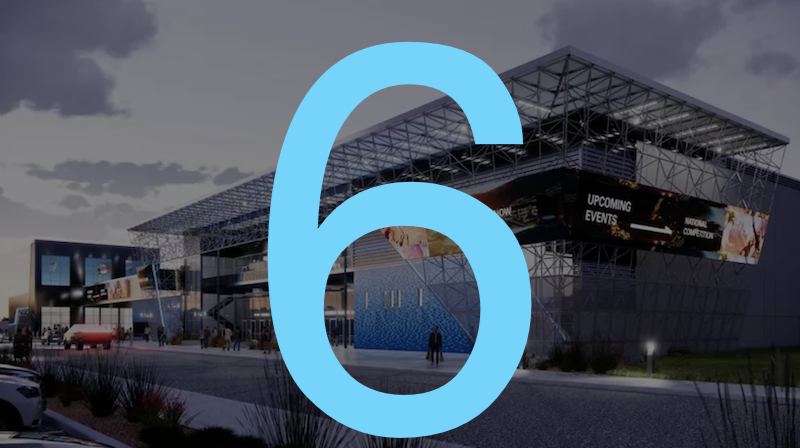1. New Innovation Center should heighten Port San Antonio’s tech profile (BD+C)
"That campus is home to over 80 public- and private-sector employers, and supports more than 14,000 direct jobs in the fields of aerospace, defense, cybersecurity, robotics, and advanced manufacturing."
2. Follow up survey of U.S. code officials demonstrates importance of continued investment in virtual capabilities (ICC)
"From August 11 through September 3, 2020, more than 800 respondents from all 50 U.S. states and the District of Columbia provided input. Respondents came from states as well as and local jurisdictions that range in size from 700 people to 4 million."
3. Four projects receive 2020 AIA/ALA Library Building Award (AIA)
"2020 AIA/ALA Library Building Award recipients must demonstrate design achievement, including a sense of place, purpose, ecology, environmental sustainability, and of history."
4. Infection control measures for airport terminals (BD+C)
"The airport “experience” of hurry up and wait leaves passengers often standing virtually on top of their fellow travelers in processing, security, and boarding queues, or at baggage carousels on their way out. And unless a person is sweating profusely or coughing violently, there’s no way to know by sight the physical condition of the person next to you."
5. Airbnb’s quick pivot to rural and suburban rentals helping it proceed with its IPO (National Real Estate Investor)
"The vacation rental site’s flexibility when it comes to its property portfolio helped it rebound much quicker than traditional hotels."
6. Rent payment tracker finds 76.4 percent of apartment households paid rent as of September 6 (National Multifamily Housing Council)
"The National Multifamily Housing Council (NMHC)’s Rent Payment Tracker found 76.4 percent of apartment households made a full or partial rent payment by September 6 in its survey of 11.4 million units of professionally managed apartment units across the country. This is a 4.8-percentage point, or 552,796-household decrease from the share who paid rent through September 6, 2019 and compares to 79.3 percent that had paid by August 6, 2020. These data encompass a wide variety of market-rate rental properties across the United States, which can vary by size, type and average rental price."

Related Stories
Market Data | Aug 13, 2018
First Half 2018 commercial and multifamily construction starts show mixed performance across top metropolitan areas
Gains reported in five of the top ten markets.
Market Data | Aug 10, 2018
Construction material prices inch down in July
Nonresidential construction input prices increased fell 0.3% in July but are up 9.6% year over year.
Market Data | Aug 9, 2018
Projections reveal nonresidential construction spending to grow
AIA releases latest Consensus Construction Forecast.
Market Data | Aug 7, 2018
New supply's impact illustrated in Yardi Matrix national self storage report for July
The metro with the most units under construction and planned as a percent of existing inventory in mid-July was Nashville, Tenn.
Market Data | Aug 3, 2018
U.S. multifamily rents reach new heights in July
Favorable economic conditions produce a sunny summer for the apartment sector.
Market Data | Aug 2, 2018
Nonresidential construction spending dips in June
“The hope is that June’s construction spending setback is merely a statistical aberration,” said ABC Chief Economist Anirban Basu.
Market Data | Aug 1, 2018
U.S. hotel construction pipeline continues moderate growth year-over-year
The hotel construction pipeline has been growing moderately and incrementally each quarter.
Market Data | Jul 30, 2018
Nonresidential fixed investment surges in second quarter
Nonresidential fixed investment represented an especially important element of second quarter strength in the advance estimate.
Market Data | Jul 11, 2018
Construction material prices increase steadily in June
June represents the latest month associated with rapidly rising construction input prices.
Market Data | Jun 26, 2018
Yardi Matrix examines potential regional multifamily supply overload
Outsize development activity in some major metros could increase vacancy rates and stagnate rent growth.
















